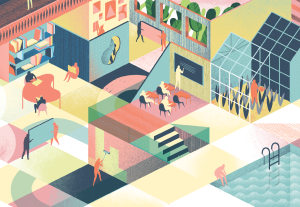- Customer Experience, Design, Design Theory, Usability, UX Education, UX Magazine, UX World Changing Ideas
Learn 5 foundational tips on how to create better learning experiences for the EdTech industry.
Article by Nicole Gallardo
5 Ways to Design Better EdTech Products with UX
- The author unpacks 5 foundational tips to help UX designers create better learning experiences for the EdTech industry:
- Don’t design for EdTech. Design for education, using technology.
- Co-create with your learning community.
- Learn to speak business.
- Look outside of EdTech for inspiration.
- Diversify your experiences.
- Designers need to remember that advancing the quality of UX design and advancing the industry standards themselves is a shared responsibility.
Share:5 Ways to Design Better EdTech Products with UX
Share this link
- May 31, 2022
8 min read







